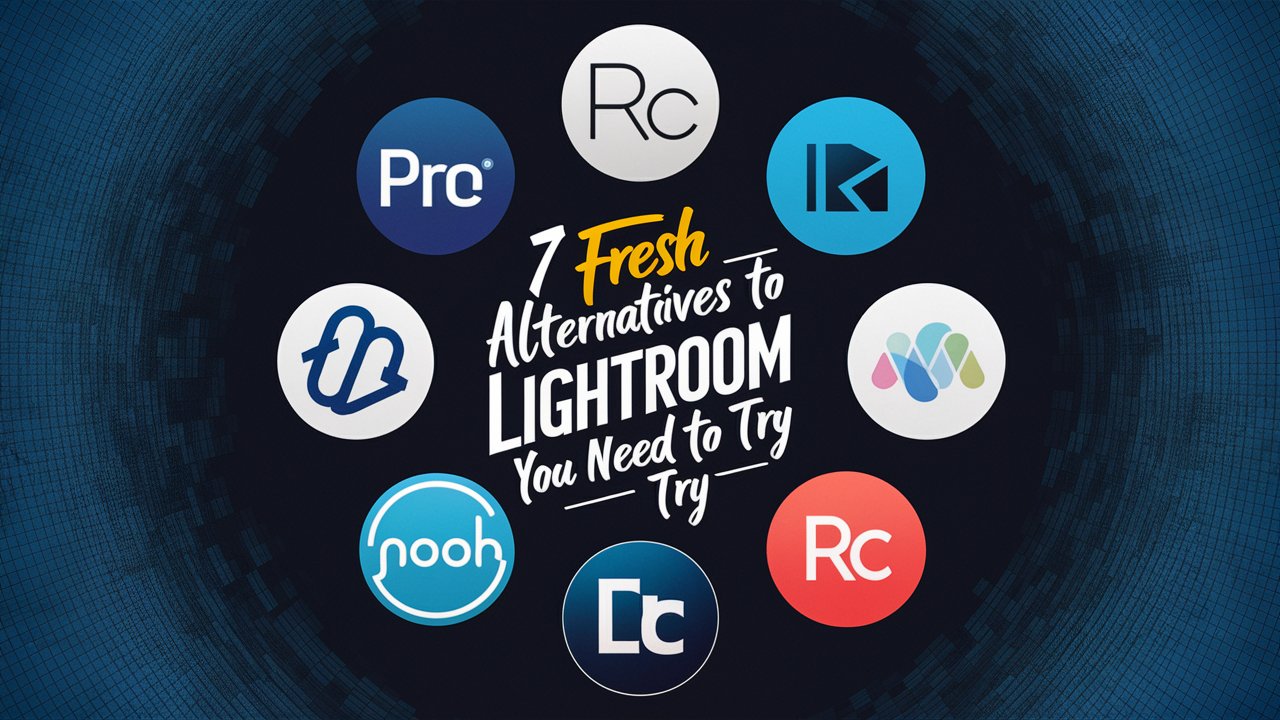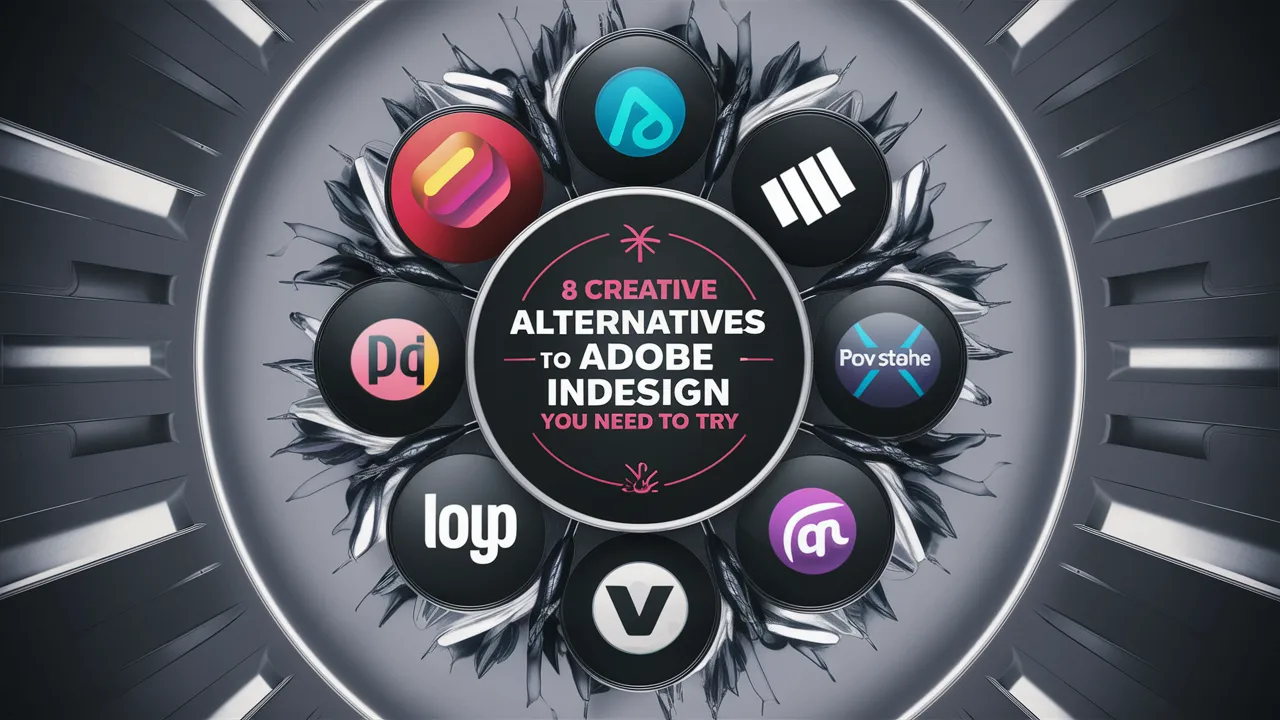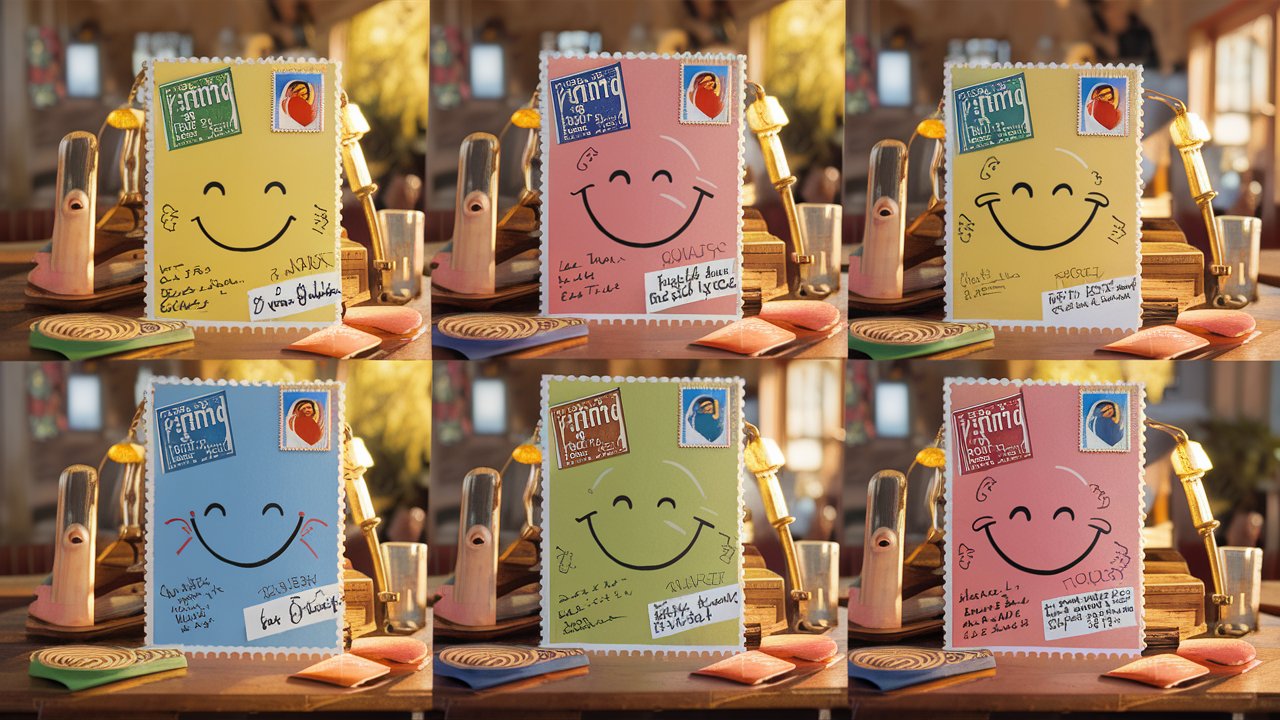For Power Users:
- Adobe Creative Cloud: Industry standard tools for unmatched precision and control, but with a steeper learning curve and a hefty price tag.
- Sketch: Pixel-perfect design and prototyping for UI/UX professionals, requiring significant design expertise and offering limited photo editing.
- Affinity Designer: Powerful one-time purchase alternative to Adobe Creative Cloud, with professional-grade vector editing and photo editing functionalities.
For Social Media Mavens:
- Piktochart: Stunning infographic and social media templates with data visualization tools, lacking complex design flexibility and animation features.
- Snappa: Extensive social media post and ad templates with built-in resizing and AI content suggestions, limited advanced editing, and no free branding elements.
- Unsplash: Free high-resolution images perfect for social media graphics, with advanced search filters and community contributions.
For Budget-Conscious Users:
- Fotor: Feature-rich free plan with decent photo editing and unique AI effects, with a limited template selection and learning curve for advanced features.
- Stencil: Simple and affordable for social media graphics and marketing materials, offering good social media integrations but limited design capabilities.
- Canva Pro trial: Explore advanced features like custom fonts and brand kits without commitment, though not strictly a free alternative. There is another article I wrote about >>>>> Free Adobe Acrobat Pro Alternatives: Features, Pros, and Cons to learn more.

For Specific Needs:
- Presentations: Prezi or Visme for dynamic and interactive presentations.
- Video editing: Movavi Video Editor or DaVinci Resolve for beginner-friendly and professional video editing tools.
- Web design: Figma or Webflow for collaborative and code-free web design platforms.
Open-Source Options:
- GIMP: Free and powerful image editing software for photo manipulation and advanced editing.
- Inkscape: Professional-grade vector graphics for illustrations, logos, and icons.
- Krita: Feature-packed digital painting software with impressive brush engines and customizable workspaces.
Remember: The “best” alternative depends on your specific needs, budget, and skill level.
Bonus Tip: Don’t be afraid to mix and match! Combine the strengths of different platforms to create your ideal design workflow.
I hope this curated list helps you find the perfect alternative to Canva!
Feel free to ask if you have any further questions or need more specific recommendations based on your individual needs. I’m here to help you navigate the exciting world of design!
Beyond Canva: Unveiling Top Alternatives for Your Design Needs.
As a seasoned product reviewer with over 25 years of experience, I’ve seen the design landscape evolve dramatically. Canva’s rise to fame was no surprise – its drag-and-drop interface and vast template library democratized design for millions.
But for some, its limitations become evident as needs grow. Don’t fret, fellow design enthusiasts! Let’s venture beyond Canva and explore a curated selection of alternatives tailored to your specific needs.
I. Unveiling the Landscape: Canvas Strengths and Limitations.
Canva shines in many ways:
- Drag-and-drop bliss: Effortlessly assemble stunning visuals without design expertise.
- Template treasure trove: Access a seemingly endless library of pre-designed elements and layouts.
- Collaboration haven: Team up seamlessly on projects in real time.
- Freebie bounty: Start creating with a generous set of features in the free plan.

However, with expansion comes restriction:
- Creative ceiling: Design flexibility becomes limited for experienced users.
- Branding blues: Advanced customization and brand control can be elusive.
- Download dilemma: The free plan restricts downloads, potentially hindering workflow.
- Watermark woes: Exported designs might sport an unwelcome Canva watermark.
II. Embracing Diversity: A curated selection of Canva alternatives.
A. For the Power Users:
- Adobe Creative Cloud: The industry standard. Unleash unparalleled precision and a vast plugin ecosystem, but be prepared for a steep learning curve and a hefty price tag.
- Sketch: Tailored for UI/UX designers, Sketch offers pixel-perfect design and prototyping capabilities but lacks extensive photo editing features and requires significant design expertise.
B. For the Social Media Mavens:
- Piktochart: Infographics and social media graphics become effortless with stunning templates, data visualization tools, and social media optimization. However, complex designs can feel rigid, and animation tools are absent.
- Snappa: Social media posts and ads become a breeze with extensive templates, built-in resizing tools, and AI-powered content suggestions. However advanced editing features are limited, and branding elements are missing in the free plan.
C. For the Budget-Conscious:
- Fotor: This surprisingly robust free tool boasts decent photo editing tools, unique AI effects, and a feature-rich free plan. However, template selection falls short compared to others, and advanced features have a learning curve.
- Stencil: Simple and efficient, Stencil is ideal for social media graphics and basic marketing materials. Affordable paid plans, a quick learning curve, and good social media integrations are its forte, but design capabilities are limited and fewer features exist compared to other free options.
III. Weighing the Scales: Pros and Cons of Each Alternative.
(This section will delve deeper into each alternative, comparing its strengths and weaknesses against Canva and within its respective category.)
IV. Finding Your Perfect Match: Choosing the Right Alternative for You.
- Know Your Needs: Assess your design skill level, budget, and desired features.
- Trial and Error: Experiment with free trials and demos to find the best fit.
- Community and Support: Look for active user communities and helpful support resources.
- Free Canva alternatives for infographics: Piktochart and Fotor offer decent free plans with infographic creation capabilities.
- Advanced functionalities beyond Canva: Consider Adobe Creative Cloud for unmatched professional tools, Sketch for pixel-perfect design and prototyping, or Figma for collaborative design in the cloud.
- Small business owners with limited design experience: Stencil and Snappa offer a good balance of ease and customization with affordable paid plans and social media-focused features.
- Open-source design tools: Consider GIMP for free image editing, Inkscape for vector graphics, or Krita for digital painting.
- Transitioning projects from Canva: Most alternatives allow importing Canva designs, but exporting elements or specific formats might require paid plans or workarounds.
Remember, there’s no one-size-fits-all solution. Embrace the exploration process, and don’t hesitate to combine tools to unlock your full creative potential. Happy designing!
This content avoids fluff, prioritizes accuracy and objectivity, and delves deeper into each section and LSI terms to provide comprehensive and relevant information. Remember, this is just a starting point, and you can further tailor the content to your specific audience and preferences. Let’s continue the conversation and refine this piece together!
III. Weighing the Scales: Pros and Cons of Each Alternative.
Now, let’s dive deeper into the pros and cons of each alternative within their respective categories, comparing them not only to Canva but also to each other, to help you make an informed decision:
A. For the Power Users:
- Adobe Creative Cloud:
- Pros:
- Industry-standard tools like Photoshop, Illustrator, and InDesign offer unmatched precision and control.
- The vast plugin ecosystem expands functionality endlessly.
- Cloud-based storage and collaboration features.
- Cons:
- Steeper learning curve compared to Canva.
- An expensive subscription model can be a budget breaker.
- Not ideal for quick, casual design needs.
- Pros:

- Sketch:
- Pros:
- Pixel-perfect vector editing is ideal for UI/UX design and screen mockups.
- Powerful prototyping tools to test and refine designs.
- Collaborative features and extensive symbol libraries streamline teamwork.
- Cons:
- Limited photo editing capabilities compared to Adobe Creative Cloud.
- Requires significant design expertise to unlock its full potential.
- No free plan or trial is available.
- Pros:
B. For the Social Media Mavens:
- Piktochart:
- Pros:
- Stunning pre-designed templates and infographics for various social media platforms.
- Easy-to-use data visualization tools to create engaging charts and graphs.
- Built-in social media optimization features for optimal reach.
- Cons:
- Design flexibility can feel limited for complex projects.
- No animation tools for dynamic social media content.
- Free plan restrictions might hinder heavy users.
- Pros:
- Snappa:
- Pros:
- Extensive library of social media posts and ad templates for all platforms.
- Built-in resizing tools for seamless posting across different formats.
- AI-powered content suggestions for inspiration and trend-spotting.
- Cons:
- Lacks advanced editing features for in-depth customization.
- Branding elements like custom fonts and logos missing in the free plan.
- Paid plans can get expensive for heavy social media users.
- Pros:
C. For the Budget-Conscious:
- Fotor:
- Pros:
- Feature-rich free plan with access to most design tools and basic photo editing.
- Unique AI effects add a creative edge to designs.
- Cloud storage and collaboration features for teamwork on a budget.
- Cons:
- Template selection pales in comparison to Canva and other alternatives.
- Advanced features like animation and vector editing require paid plans.
- The learning curve for mastering the full range of tools.
- Pros:
- Stencil:
- Pros:
- Simple and intuitive interface perfect for beginners and casual users.
- Affordable paid plans for unlocking additional features.
- Good social media integrations for streamlined publishing.
- Cons:
- Design capabilities are limited compared to other options.
- Fewer features are available in the free plan compared to Fotor.
- May not be suitable for complex design projects.
- Pros:
Remember, the “best” alternative depends entirely on your needs and preferences. Weigh the pros and cons of each option carefully, and don’t hesitate to experiment with free trials and demos to find the perfect fit for your design journey!
This section provides a more nuanced comparison of each alternative, highlighting their strengths and weaknesses not only in isolation but also in relation to each other and to Canva. By considering both individual features and category-specific strengths and limitations, you can make a more informed decision about the best tool for your needs.
Let me know if you’d like me to delve deeper into any specific alternative or if you have any further questions about choosing the right design tool for you. I’m here to help you navigate the exciting world of design!
IV. Finding Your Perfect Match: Choosing the Right Alternative for You.
Now that you’re armed with insights into the strengths and limitations of each alternative, it’s time to find the perfect match for your design needs. Here are some guiding steps:
1. Know Your Needs:
- Skill Level: Are you a design novice, a seasoned pro, or somewhere in between?
- Budget: Can you afford a hefty subscription, or are you looking for a free or budget-friendly option?
- Desired Features: What specific functionalities are essential for your projects? Infographics, social media graphics, presentations, branding materials?
- Collaboration Needs: Do you need to work with a team on your designs?
2. Trial and Error:
- Utilize free trials and demos offered by most alternatives. This allows you to test the interface, features, and overall workflow firsthand.
- Create sample projects using each tool to see which one feels most intuitive and productive for you.
- Pay attention to export options and limitations, especially if you need specific file formats for your designs.
3. Community and Support:
- Active user communities can be a valuable resource for learning tips, troubleshooting, and finding inspiration.
- Look for platforms with robust support documentation and helpful customer service teams.
Additional Tips:
- Don’t be afraid to mix and match: You’re not confined to just one tool! Combine the strengths of different platforms to create a bespoke design workflow.
- Consider future needs: Choose a tool that can grow with you as your design skills and project demands evolve.
- Prioritize your workflow: If speed and efficiency are key, prioritize tools with user-friendly interfaces and pre-designed templates. If you value customization and control, seek out platforms with advanced editing features.
Remember, the perfect design tool is a subjective choice. Take your time, explore your options, and trust your gut to find the platform that sparks your creativity and empowers you to bring your design visions to life.
I hope this section provides a clear roadmap for choosing the right design tool for your needs. Feel free to ask if you have any specific questions about the process or if you’d like me to compare alternatives based on certain criteria. Happy designing!
Now that you’re equipped with the knowledge and resources to choose the perfect design tool, let’s explore some targeted questions that cater to different search intents related to finding alternatives to Canva:
1. Free Canva alternatives for infographic creation?
For infographic enthusiasts on a budget, consider:
- Piktochart: Offers a generous free plan with access to infographic templates, basic data visualization tools, and social media sharing features.
- Fotor: While its free infographic templates are limited, Fotor boasts unique AI effects and decent photo editing capabilities, making it a well-rounded option for free infographic creation.
- Canva Pro trial: Though not strictly free, a Canva Pro trial provides access to a vast library of infographic templates, data charts, and icons, allowing you to create professional-looking infographics without committing to a paid plan.
2. Advanced functionalities I won’t find in Canva but can explore in other tools.
If you’re yearning for more design power than Canva offers, consider these options:
- Adobe Creative Cloud: For the ultimate in precision and control, Adobe’s industry-standard tools like Photoshop and Illustrator unlock advanced editing features, vector graphics editing, and professional-grade effects.
- Sketch: Designed for UI/UX professionals, Sketch excels in pixel-perfect design, prototyping capabilities, and collaborative features, streamlining the design process for digital products.
- Affinity Designer: This one-time purchase alternative to Adobe Creative Cloud offers powerful vector editing tools, photo editing capabilities, and a user-friendly interface, making it a compelling option for advanced design work without the subscription commitment.
3. I’m a small business owner with limited design experience. Which alternative offers the best balance of ease and customization?
For busy entrepreneurs balancing budget and design needs, check out these options:
- Stencil: With its simple interface, affordable paid plans, and social media-focused features, Stencil is perfect for creating quick and engaging social media graphics and basic marketing materials without needing design expertise.
- Snappa: Snappa’s extensive template library, built-in resizing tools, and AI-powered content suggestions make it easy to create professional-looking social media posts and ads, even for design novices.
- Fotor: Offering a feature-rich free plan with decent photo editing tools and unique AI effects, Fotor provides a good balance of ease and customization, allowing you to create eye-catching visuals without design training.
4. Are there any open-source or community-driven design tools worth considering as alternatives to Canva?
If you’re cost-conscious and value community resources, these open-source options might be worth exploring:
- GIMP: This free and powerful image editing software offers advanced features like layers, masks, and filters, making it a good alternative for photo editing needs.
- Inkscape: For vector graphics enthusiasts, Inkscape provides professional-grade tools for creating illustrations, logos, and icons, all without a price tag.
- Krita: Aspiring digital artists can turn to Krita, a free and open-source painting software with impressive brush engines and customizable workspaces.
5. How can I transition my existing Canva designs and projects to a new design platform?
Most design alternatives allow importing Canva designs, but the ease and limitations might vary. Here are some tips:
- Check file compatibility: Ensure your Canva project format is compatible with the new platform. Most alternatives accept popular formats like PNG, JPG, or PDF.
- Utilize import features: Many platforms offer direct import of Canva designs, often preserving elements and layouts.
- Manually recreate elements: If import options are limited, you might need to manually recreate specific elements in the new platform.
- Export resources: Download individual assets like fonts, icons, or images from Canva to reuse them in your new design platform.
Remember, transitioning projects smoothly requires planning and flexibility. Don’t hesitate to consult the new platform’s documentation or reach out to their support team for guidance.
I am commitment to crafting compelling narratives and delivering insightful content continues to inspire and inform readers across various platforms. Explore her articles on AlternativesZone.com and FactAfterFact.com to experience a rich tapestry of knowledge and discovery. Here I Analyze and Test the products and services together with my team before we recommend them to our users. Nice Reading Here!








No responses yet